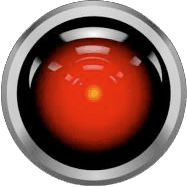Spoiler free.
 In today’s American cinema, it’s rare to see a film unafraid to revel in its moments of ambiguity; to see a film that feels more like a novel, yet still uses the visual medium with the greatest love and understanding. Francis Ford Coppola’s YOUTH WITHOUT YOUTH seems to have garnered the worldwide first impression of being a great disappointment. At least that’s what one might take from the majority of reviews. No one seemed to love it, a few truly liked it, and many seemed to downright dismiss it. But this is the path one takes when he or she chooses to create simply for the sheer joy of creating, of telling a story one feels needs to be told, if for no other reason than the filmmaker himself wanting to see it.
In today’s American cinema, it’s rare to see a film unafraid to revel in its moments of ambiguity; to see a film that feels more like a novel, yet still uses the visual medium with the greatest love and understanding. Francis Ford Coppola’s YOUTH WITHOUT YOUTH seems to have garnered the worldwide first impression of being a great disappointment. At least that’s what one might take from the majority of reviews. No one seemed to love it, a few truly liked it, and many seemed to downright dismiss it. But this is the path one takes when he or she chooses to create simply for the sheer joy of creating, of telling a story one feels needs to be told, if for no other reason than the filmmaker himself wanting to see it.
I’m not claiming that YOUTH WITHOUT YOUTH is a cinematic masterpiece, or even a great film, but it is an interesting one that does not go to most, if any, of the places one thinks it will (or should). When that happens, a film is often seen as a failure because the viewer didn’t get what he or she wants or believes a film should be. Take Desson Thomson’s quote from his review in the Washington Post:
“Coppola proves that even the best of our film artists can lose sight of what this medium is all about: entertaining, enlightening and including its audience.”
It always amazes me when critics (or people in general) decide what a work of art is “supposed to be”. And even if the above quote were somehow steeped in some inescapable but incredibly worrisome truth, who’s to say the film doesn’t do that? The best one can say is that it didn’t do that for them. I found YOUTH WITHOUT YOUTH to be entertaining and enlightening and I never felt left out. Is the story confusing? Yes, at times, but not horribly so. But the film relishes its moments of ambiguity, its sudden changes of mood and, at times, even genre. These aren’t mistakes or missteps, these are deliberate. This is the story being told.
Granted, YOUTH WITHOUT YOUTH is nothing like THE GODFATHER or THE CONVERSATION or APOCALYPSE NOW. It doesn’t feel like those films, move like those films. It does, however, have traces of mood we’ve seen from Mr. Coppola before: BRAM STOKER’S DRACULA, ONE FROM THE HEART, RUMBLE FISH. So many films throughout Coppola’s career have been ill received. Films that I think to be quite masterful, fascinating, daring, challenging and incredibly cinematic. It seems the films Coppola made for others are the films that garnered him the most attention and acclaim. And they are all worthy. Some, in fact, are among my favorite films of all time. Though they may not have been close to Coppola’s heart or, at best, not exactly what he would have liked to be making, I am glad that I live in a world where these films exist. After all, once the film is out there, the intent of the filmmaker is almost secondary to the effect and interpretation put on it by individual viewers.
Stanley Kubrick once said:
“A film is – or should be – more like music than like fiction. It should be a progression of moods and feelings. The theme, what’s behind the emotion, the meaning, all that comes later.”
This is what film was for Stanley Kubrick. It is not, nor does it need to be, that for everyone. However, I’d say Mr. Coppola is working along very similar lines here. There was a time when films like YOUTH WITHOUT YOUTH stood a better chance of finding an audience. That time is over thirty years past, but I still hold out a strong hope for the future. If everything’s cyclical, then there’s a great resurgence of American film as art somewhere in our futures. Sadly today, Hollywood cinema is to art what the Bush Administration is to the American dream. We’ve been in a very dark period, people are numb and their expectations have been lowered to frightening standards.
But the world of literature continues to be a medium where anything can happen. There are no rules to follow, no structure that need be adhered to, no style that is considered improper. Be it the prose of a Michael Ondaatje or a Toni Morrison, the delirious surreality of a Haruki Murakami, the delicious imagery and word structure of a John Steinbeck, or the chilling imagination of a Stephen King or popular suspense of a John Grisham, all forms of storytelling are accepted and have an audience. Film has the same potential and, in my opinion, should be bound by no less artistic freedom. Which brings me to yet another quote by the late Mr. Kubrick:
“A filmmaker has almost as much freedom as a novelist has when he buys himself some paper.”
How easy it is to forget this. Whether we’re the filmmaker or the audience.
YOUTH WITHOUT YOUTH trailer

Leave a comment